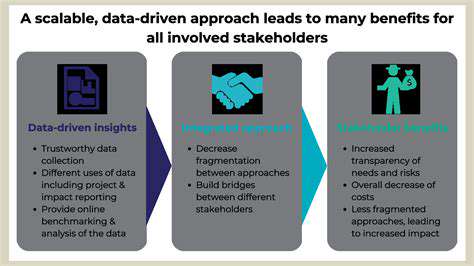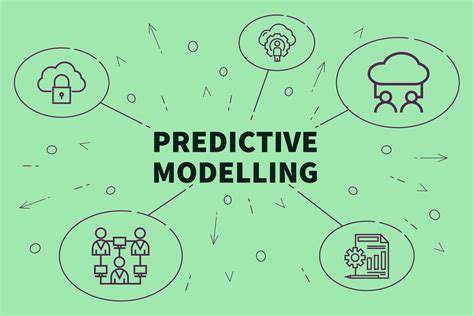Predictive Analytics for Smart Building Maintenance
Predictive maintenance, a crucial component of smart building technology, represents a significant departure from traditional reactive maintenance strategies. Instead of waiting for equipment failures to occur and then addressing them, predictive maintenance leverages data analytics to anticipate potential problems. This proactive approach minimizes downtime, reduces repair costs, and maximizes the lifespan of building systems. By analyzing data from sensors, IoT devices, and historical performance records, predictive maintenance algorithms can identify patterns and anomalies that signal impending failures, allowing for preemptive maintenance actions. This approach not only saves money but also enhances operational efficiency and improves the overall building experience for occupants.
The key to effective predictive maintenance in smart buildings lies in the integration of various data sources. Real-time sensor data from HVAC systems, lighting fixtures, elevators, and other critical components provides a continuous stream of information. This data, combined with historical maintenance records, operational parameters, and environmental conditions, allows algorithms to develop accurate predictive models. The ability to analyze these vast quantities of data is crucial for identifying subtle trends and patterns that might otherwise go unnoticed, enabling proactive interventions before significant issues arise.
Benefits and Implementation of Predictive Maintenance
Implementing predictive maintenance in smart buildings offers a multitude of benefits, ranging from cost savings to enhanced safety and operational efficiency. Reduced downtime due to proactive maintenance translates into significant cost savings by minimizing repair expenses and lost productivity. Predictive models can also identify potential energy waste, allowing for optimization of energy consumption and reducing utility bills. Furthermore, proactive maintenance schedules contribute to a safer building environment by preventing catastrophic failures and ensuring consistent performance of critical systems.
Implementing a predictive maintenance strategy requires careful planning and execution. The initial phase involves establishing a robust data collection system that integrates various building systems. This often necessitates the installation of additional sensors and the development of a comprehensive data management plan. Once data collection is established, the next step involves training predictive algorithms on historical data. This process ensures the accuracy and reliability of the predictive models, allowing for informed decisions regarding maintenance scheduling.
The ongoing monitoring of system performance and the continuous refinement of predictive models are also crucial for maintaining optimal performance. Regular updates and adjustments to the models based on new data and operational insights are essential for maintaining accuracy and adaptability. This iterative approach ensures that the predictive maintenance system remains effective in anticipating and mitigating potential issues, leading to greater operational efficiency and cost savings.
A successful predictive maintenance program requires a commitment to data integration and analysis. Building operators and stakeholders must embrace the importance of data-driven decision-making and invest in the necessary tools and expertise to manage and interpret the large datasets generated by smart building systems.
Finally, a crucial aspect of implementation is ensuring clear communication and collaboration across different teams involved in building management, from engineering and operations to maintenance and IT. This collaborative environment facilitates the effective use of predictive insights and promotes a culture of proactive maintenance.
Predictive Modeling for Proactive Maintenance Scheduling

Predictive Modeling Techniques
Predictive modeling, a crucial component of proactive strategies, utilizes historical data to forecast future outcomes. By identifying patterns and relationships within the data, predictive models can anticipate potential issues or opportunities, enabling proactive interventions and improved decision-making. This approach is particularly valuable in fields like finance, healthcare, and marketing, where anticipating future trends can significantly impact outcomes.
Various techniques are employed in predictive modeling, including regression analysis, classification, and clustering. Each technique offers a unique approach to uncovering patterns and making predictions, tailored to specific types of data and desired outcomes. Understanding these different approaches is essential for choosing the most effective model for a given problem.
Data Preparation and Feature Engineering
A critical step in building effective predictive models is meticulous data preparation. This involves cleaning, transforming, and preparing the data for use in the model. Data cleaning addresses missing values, outliers, and inconsistencies. Feature engineering, a crucial part of this process, involves creating new features from existing ones to improve model accuracy and predictive power. This often involves transforming existing variables or combining them in novel ways.
Thorough data preparation is paramount for the success of any predictive modeling project. Incomplete or inaccurate data will inevitably lead to inaccurate predictions.
Model Selection and Evaluation
The choice of a suitable predictive model depends on the nature of the problem and the characteristics of the data. Evaluating model performance is crucial to determine which model best fits the data and produces the most accurate predictions. Common evaluation metrics include accuracy, precision, recall, and F1-score, which provide insights into the model's ability to correctly classify instances.
Selecting the right model and evaluating its effectiveness are essential steps in building a robust and reliable predictive model. A model that performs well on one dataset might not perform as well on another, highlighting the importance of rigorous validation and testing.
Deployment and Monitoring
Once a predictive model is developed and validated, it needs to be deployed into a production environment. This often involves integrating the model into existing systems and processes. Continuous monitoring of the model's performance is essential. This ensures that the model remains accurate and relevant as new data becomes available. Adjustments and retraining may be necessary to maintain the model's predictive power over time.
Applications in Various Domains
Predictive modeling finds applications across various industries. In finance, it can be used to predict market trends or identify potential risks. In healthcare, it can help anticipate patient needs and improve treatment outcomes. In marketing, it can be utilized to target specific customer segments and personalize marketing campaigns.
Predictive modeling empowers organizations to make better decisions by anticipating future trends and proactively addressing potential issues or opportunities. This capability is particularly crucial in today's dynamic and complex business environment.
Ethical Considerations
As predictive models become more sophisticated, ethical considerations become increasingly important. Bias in data can lead to biased predictions, which can have significant implications for individuals and society. It is essential to ensure that the data used to train models is representative and does not perpetuate existing inequalities. Transparency and explainability of the models are also critical to building trust and accountability.












